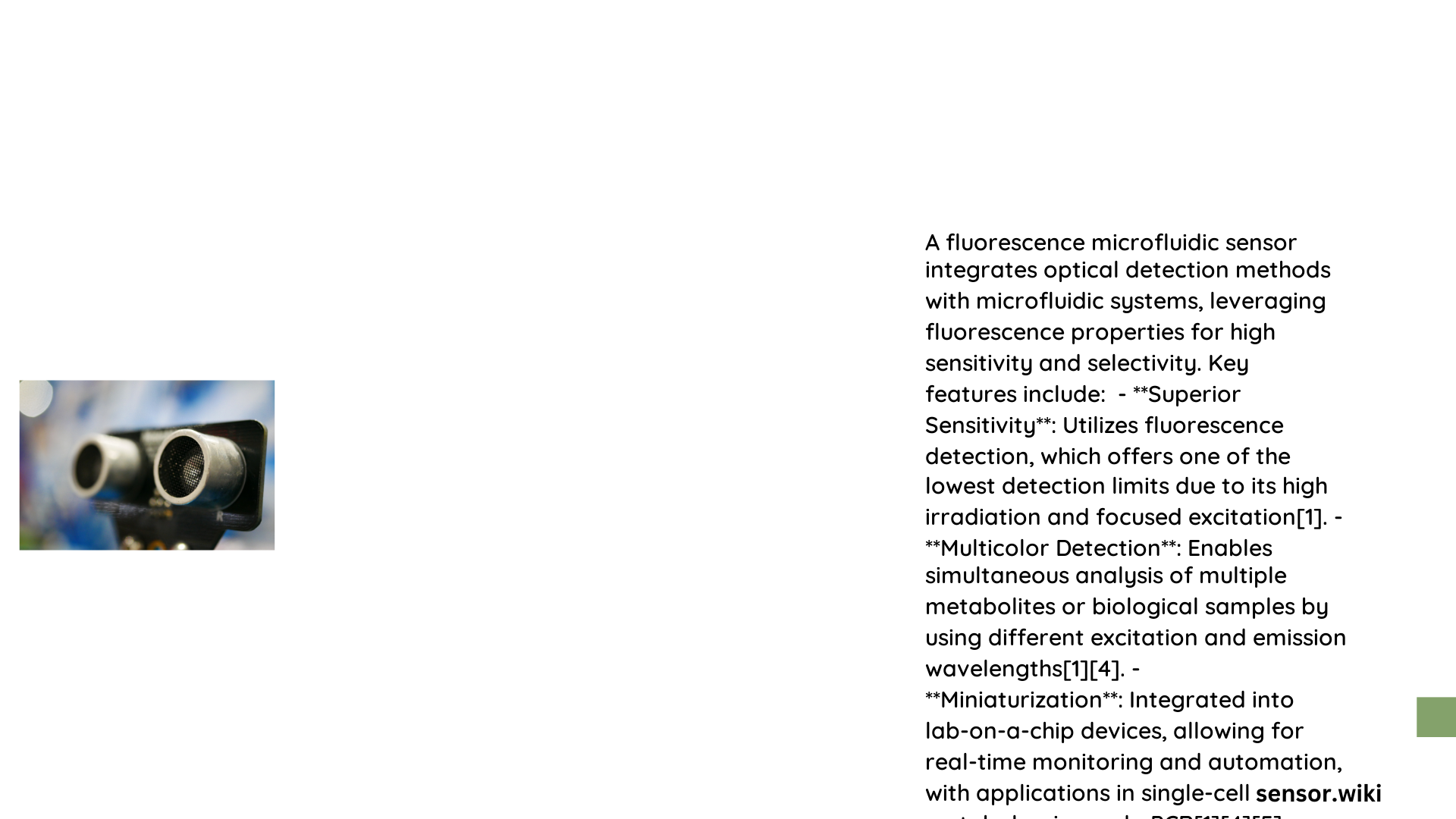Fluorescence microfluidic sensors represent a revolutionary approach in analytical science, enabling ultra-sensitive detection and real-time analysis across multiple domains including medical diagnostics, environmental monitoring, and biochemical research. These sophisticated devices leverage microscale channel geometries and advanced optical techniques to achieve unprecedented precision in detecting minute quantities of target molecules through fluorescent signaling.
What Makes Fluorescence Microfluidic Sensors Unique?
Fluorescence microfluidic sensors distinguish themselves through several remarkable characteristics:
Key Performance Characteristics
- Exceptional sensitivity (detection limits in picomolar ranges)
- Rapid response times (milliseconds to seconds)
- Minimal sample volume requirements
- High spatial and temporal resolution
- Versatile applicability across multiple research domains
How Do Fluorescence Microfluidic Sensors Operate?

The operational mechanism of fluorescence microfluidic sensors involves intricate interactions between optical, microfluidic, and biochemical components:
Core Operational Principles
- Sample Introduction: Minute sample volumes enter precisely engineered microchannels
- Fluorescent Labeling: Target molecules are tagged with fluorescent markers
- Excitation: Specific wavelength light stimulates fluorescent molecules
- Emission Detection: Specialized optical systems capture emitted fluorescent signals
- Signal Processing: Advanced algorithms analyze fluorescence intensity and characteristics
What Are Critical Design Parameters?
| Parameter | Optimal Range | Impact on Performance |
|---|---|---|
| Channel Width | 10-100 μm | Determines fluid dynamics |
| Material | Glass/PDMS | Influences optical properties |
| Surface Coating | Hydrophobic/Hydrophilic | Affects molecular interactions |
| Optical Path Length | 100-500 μm | Modulates signal intensity |
What Challenges Exist in Sensor Development?
Technical Limitations
- Background noise reduction
- Maintaining consistent optical alignment
- Minimizing photobleaching effects
- Achieving uniform excitation across microchannels
How Can Sensor Sensitivity Be Enhanced?
Researchers employ multiple strategies to improve fluorescence microfluidic sensor performance:
Optimization Techniques
- Implementing advanced optical components
- Utilizing nano-structured surfaces
- Developing sophisticated signal processing algorithms
- Integrating machine learning for data interpretation
What Are Potential Applications?
Fluorescence microfluidic sensors demonstrate remarkable versatility:
- Medical Diagnostics:
- Early disease detection
- Genetic screening
-
Cellular analysis
-
Environmental Monitoring:
- Water quality assessment
- Pollutant detection
-
Microbial identification
-
Pharmaceutical Research:
- Drug screening
- Protein interaction studies
- Molecular binding kinetics
What Future Developments Are Anticipated?
Emerging Trends
- Integration with artificial intelligence
- Increased miniaturization
- Enhanced multi-parameter detection capabilities
- Lower manufacturing costs
Conclusion
Fluorescence microfluidic sensors represent a transformative technology with immense potential across scientific disciplines, promising unprecedented insights into complex biological and chemical systems.
